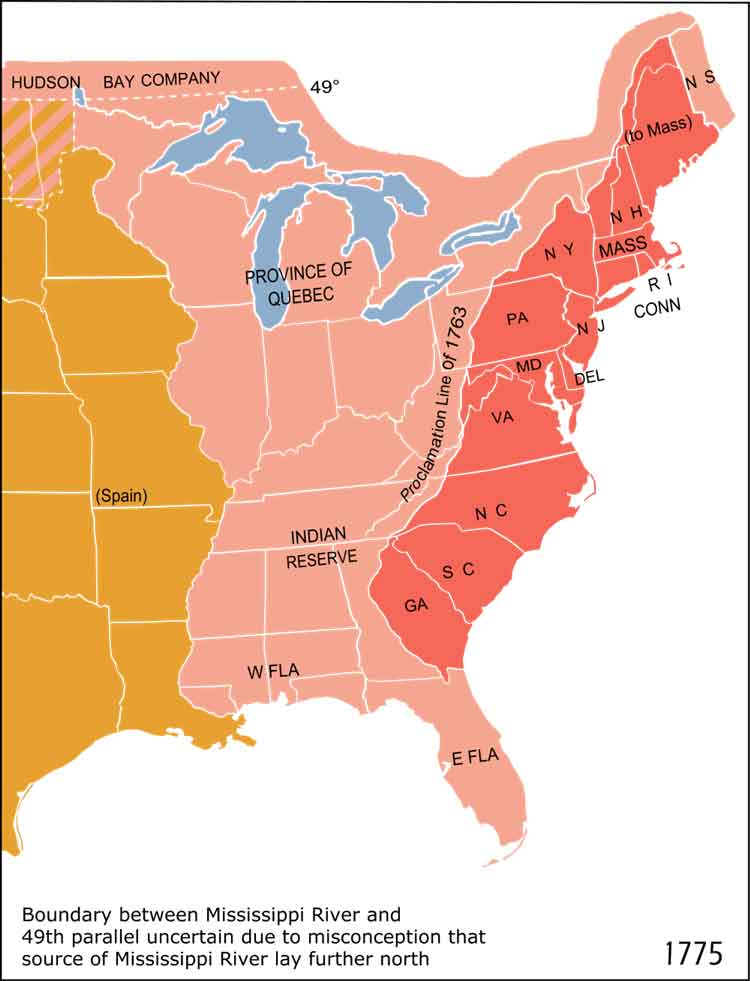 The Royal Proclamation by King George III on October 7, 1763 prompted the organization and control of the newly acquired French Territory in North America at the conclusion of the Seven Years’ War, or as American colonists would dub it, the French and Indian War. Bringing this new empire into the fold and stabilizing relationships with the natives was of vital importance. Among the main activities that were planned included settlement, regulation of trade, and various land purchases of the new Western frontier. This royal proclamation proves to be of legal importance to the First Nations of Canada, and affected the status of indigenous peoples throughout the United States.
The Royal Proclamation by King George III on October 7, 1763 prompted the organization and control of the newly acquired French Territory in North America at the conclusion of the Seven Years’ War, or as American colonists would dub it, the French and Indian War. Bringing this new empire into the fold and stabilizing relationships with the natives was of vital importance. Among the main activities that were planned included settlement, regulation of trade, and various land purchases of the new Western frontier. This royal proclamation proves to be of legal importance to the First Nations of Canada, and affected the status of indigenous peoples throughout the United States.
Aside from the immediate task of regulating the colonial expansion, the royal proclamation also influenced the management of other ceded French colonies, namely Quebec, Grenada, East and West Florida.
Conflicts
One of the biggest problems that faced the British efforts was dealing with land speculators in the European and British colonies. Their activities proved unhealthy, as it led to different frontier conflicts with which the royal proclamation was hoping to resolve. Many of the natives, especially those coming from the Great Lakes Region, had strong ties with the defeated French. They were generally dismayed with the fact that they were already considered as conquered peoples under the sovereignty of Britain. It spawned Pontiac’s Rebellion, which was an unsuccessful effort by the Native Americans to stop the British from occupying French-claimed lands.
The Royal Proclamation of 1763 had already been in the works before the events of Pontiac’s rebellion, but the formal outbreak of the violent conflict only hastened its completion. The war itself told so many horrible tales of vicious ruthlessness; it prompted Britons to successfully reconcile with the natives and incorporate them into British rule to prevent further and future hostilities from ever happening again.
Boundaries
The resulting action of the proclamation had created the boundary line that identified British colonies mostly on the Atlantic coasts, and the American Indian Lands (also referred to as the Indian reserve) that plied west of the Appalachian Mountains. The line was never intended to become a permanent boundary between the two lands and the inhabitants living on the other side, but only as a temporary boundary that could always be extended further west in lawful ways.
All of a sudden, most of the colonists including land speculators had strongly objected to this boundary created by the proclamation, as settlements were already setup beyond the line. There are also numerous land claims that were yet to be settled. Adding to the confusion was the granting of land to British soldiers who participated on the great Seven Year’s War. The result in all this was the further extension of the line with a series of treaties between the Native Indians.
The Royal Proclamation of 1763 also had influenced the coming of the American Revolution, and it officially ceased to exist at the launch of the revolutionary war as Great Britain finally ceded her conquered lands to the United States.